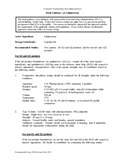The innovator for Lubiprostone (trade name Amitza), a drug used for certain types of chronic and idiopathic constipation, petitioned the FDA to change the requirements detailed in a previously issued draft Guidance issued in 2010 for demonstrating bioequivalence of the product. In that Guidance, the FDA requested that the sponsor for a generic version of the drug conduct a pharmacokinetic study using the 24 mcg dose of the product, as well as a BE study with clinical endpoints and dissolution studies. FDA notes that “Lubiprostone is a locally acting prostaglandin E1 metabolite analog and is a specific activator of CIC-2 chloride channels that are involved in the secretion of fluids into the GI tract.”
The innovator of Amitza petitioned the FDA in January 2014 to revise its draft BE guidance to include additional BE studies with clinical endpoints for various other approved indications. The FDA explained in its denial letter, issued July 17,2015, that it has been reviewing the approval requirements for all locally acting drug products in the gastrointestinal (GI) tract and had decided to revise its BE recommendations for all. However, its revised recommendations (here) actually made the path to approval for a duplicate version of the drug potentially easier for generic entrants.
The FDA stated in its petition denial letter (here) that:
The August 2010 Draft Guidance recommended a fed bioequivalence study with PK endpoints and a bioequivalence study with clinical endpoints. This recommendation applied to all potential generic formulations, without regard to how similar they were to the RLD. That is, we did not give separate consideration for products that have qualitatively (QI) and quantitatively (Q2) the same inactive ingredients as the RLD (Ql/Q2 products). Upon further reflection, however, we have determined that bioequivalence can be demonstrated for Q1/Q2 lubiprostone products without the need for a comparative clinical endpoint study. We now recommend that ANDAs for proposed lubiprostone products should submit the following bioequivalence studies:
For proposed Ql/Q2 generic lubiprostone products, assess bioequivalence using a quantitative capsule rupture (dissolution) test and a fed PK study measuring the M3 metabolite in plasma
For proposed generic lubiprostone products that are not QI and Q2 the same relative to the RLD (i.e., non-Ql/Q2 products), assess bioequivalence using a fed PK study measuring the M3 metabolite in plasma as well as a comparative clinical endpoint study in subjects with CIC
For proposed generic lubiprostone products that are not QI and Q2 the same relative to the RLD (i.e., non-Ql/Q2 products) where the ANDA applicant can otherwise provide satisfactory evidence that any differences in excipients between the proposed generic product and the RLD do not affect bioequivalence, assess bioequivalence using a quantitative capsule rupture (dissolution) test and a fed PK study measuring the M3 metabolite in plasma
FDA also explained its rationale for its decision in detail in the denial letter and also set the record straight when the innovator noted that, because of the 80-125% confidence interval, that concentration of the generic lubiprostone could be 25% different than that of the reference listed drug (RLD). FDA noted that:
In other words, your statement that a generic lubiprostone product could have up to a 25 percent higher plasma concentration than Amitiza is incorrect. The 80 to 125 percent bioequivalence limits reflects decades of scientific data on the variability of product characteristics, and your petition does not present any reasons to question these limits or the statistical standards used to ensure meaningful bioequivalence results. A 25 percent difference in peak concentration between a test and reference bioequivalence parameters will virtually always result in failure to meet bioequivalence limits. The statistical approach used by us to analyze bioequivalence study data is designed to minimize the risk in situations where the patient is switched to a generic version of a medication he or she is currently taking.
Previous studies of BE results show that generics actually differ by only 3.5-4%, a result that would be expected if two lots of the innovator product were tested against themselves.
The FDA is permitting a pK study only if the generic product is Q1 and Q2 is the same as the RLD, along with a rigorous comparative dissolution testing protocol. This is a position that FDA has taken for other orally administered products whose primary mechanism of action is based on its local effect in the GI tract. If however, the products are not Q1 and Q2, then the FDA is recommending that a BE study with clinical endpoints in chronic idiopathic constipation also be included in the testing regimen.
The Office of Generic Drug continues to evaluate its requirements for BE testing and often revises its guidance based on new information and scientific data that becomes available.



